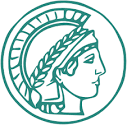Pronoun Paradigm: Anong
Paradigm Details:
Family:
System Type: F
Source: Sun and Liu (2009).
Comment: Particles marking the agent and object of a sentence exist in the language (Sun 2009:113 ff). While these elements may mark pronouns, the forms listed below exclude these markers. This is the case as these particles are considered distinct elements by Sun (2009:113 ff) and their appearance displays a degree of optionality dependent on the structure of the sentence (Sun 2009:113 ff). tones: ˥ = 55 ˥˧ = 53 ˧ = 33 ˧˩ = 31 ˧˥ = 35
Pronoun Paradigm:
| A | S | O | Poss. | |
|---|---|---|---|---|
| 1st (excl) Person Singular | ŋɑ˧˩, ɑ˧˩io˧˩ | ŋɑ˧˩, ɑ˧˩io˧˩ | ŋɑ˧˩, ɑ˧˩io˧˩ | ŋɑ˧˩, ɑ˧˩io˧˩ |
| 1st (excl) Person Dual | ɑ˧˩iɯŋ˥si˧˩ | ɑ˧˩iɯŋ˥si˧˩ | ɑ˧˩iɯŋ˥si˧˩ | ɑ˧˩iɯŋ˥si˧˩ |
| 1st (excl) Person Plural | ɑ˧˩iɯŋ˥ | ɑ˧˩iɯŋ˥ | ɑ˧˩iɯŋ˥ | ɑ˧˩iɯŋ˥ |
| 1st (incl) Person Dual | ŋɑ˧˩iɯŋ˥si˧˩ | ŋɑ˧˩iɯŋ˥si˧˩ | ŋɑ˧˩iɯŋ˥si˧˩ | ŋɑ˧˩iɯŋ˥si˧˩ |
| 1st (incl) Person Plural | ŋɑ˧˩iɯŋ˥ | ŋɑ˧˩iɯŋ˥ | ŋɑ˧˩iɯŋ˥ | ŋɑ˧˩iɯŋ˥ |
| 2nd Person Singular | ɳɑ˧˩ | ɳɑ˧˩ | ɳɑ˧˩ | ɳɑ˧˩ |
| 2nd Person Dual | ɳɛ˧˩ɳɯŋ˥si˧˩ | ɳɛ˧˩ɳɯŋ˥si˧˩ | ɳɛ˧˩ɳɯŋ˥si˧˩ | ɳɛ˧˩ɳɯŋ˥si˧˩ |
| 2nd Person Plural | ɳɛ˧˩ɳɯŋ˥ | ɳɛ˧˩ɳɯŋ˥ | ɳɛ˧˩ɳɯŋ˥ | ɳɛ˧˩ɳɯŋ˥ |
| 3rd Person Singular Gender 1 | ŋ˧˩ | ŋ3ŋ˧˩ | ŋ˧˩ | ŋ˧˩ |
| 3rd Person Singular Gender 2 | ŋ˧˩ | ŋ˧˩ | ŋ˧˩ | ŋ˧˩ |
| 3rd Person Dual | ŋ˧˩ɳɯŋ˥si˧˩ | ŋ˧˩ɳɯŋ˥si˧˩ | ŋ˧˩ɳɯŋ˥si˧˩ | ŋ˧˩ɳɯŋ˥si˧˩ |
| 3rd Person Plural | ŋ˧˩ɳɯŋ˥ | ŋ˧˩ɳɯŋ˥ | ŋ˧˩ɳɯŋ˥ | ŋ˧˩ɳɯŋ˥ |


